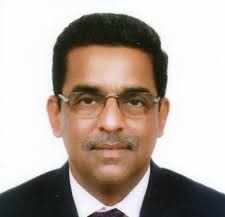
Nitin Gokhale
When US Secretary of Defence Ashton Carter embarks on his two-week long Asia tour on Sunday, he will seek to get a reluctant India on-board a wider security compact that the US aspires to build as a hedge against an increasingly assertive China in the region, besides recalibrating Washington’s defence ties with countries such as Philippines, Saudi Arabia andouille the United Arab Emirates.
Carter will confer with Defence Minister Manohar Parrikar one on one for two days in Goa–the latter’s home state–before participating in official delegation level talks in the Capital on Tuesday. He will also most likely meet Prime Minister Narendra Modi during his stay in Delhi. In Goa, Parrikar and Carter will embark on USS Blue Ridge, the Command ship of the US 7th Fleet.
In a first. Parrikar will take Carter on India’s biggest ship the aircraft carrier, INS Vikramaditya, ironically of Russian origin and flying Russian-made MiG-29 K combat jets from it’s deck.
But symbolism apart, the outgoing Obama Administration has been eager to dovetail India’s Act East policy with its own Rebalance to Asia approach to the new great game that is building up in Asia-Pacific.
Speaking at the Council for Foreign Relations in New York on Friday, Carter said: “the Asia-Pacific is the “single most consequential region” for America’s future, and the United States is actively working to further strengthen its ties in the region.”
Carter comes to India on the back of reputation as the most India-friendly head of the Pentagon in recent years. As the man behind the India-centric Defence Technology and Trade Initiative (DTTI), Carter pushed the US administration to evolve the policy that not only de-hypenates India-Pakistan but also allows transfer of key technologies to the Indian military.
One key condition that the US wants India to fulfil is to sign what are called ‘foundational pacts,’ chiefly the Logistics Support Agreement (LSA) now also being labelled as Logistics Exchange Memorandum of Agreement”, LEMOA for short which is likely to be the suitably modified to meet some of the Indian concerns.
Contrary to reports however, India and the US are not discussing the other two pacts called Communications Inter-operability and Security Memorandum of Agreement (CISMOA), and the Basic Exchange and Cooperation Agreement (BECA), also proposed by Washington almost a decade ago.
Ahead of Carter’s visit some progress has been reported on a number of initiatives, including positive developments in aircraft carrier, jet fighter, and jet engine collaboration.
Carter said at the CFR that he will talk about “exciting new projects” as well. There is so much potential with India, he said, that the United States is “seizing every opportunity we can.”
However, Carter would also discuss the situation in Asia Pacific with Parrikar–who is himself scheduled to make his first trip China later this month–and how India can help in containing China. Although Parrikar refused to endorse a call by Adm Harry Harris, head of the Pacific Command, to undertake joint patrolling in the contentious South China Sea, India is not averse to joint naval exercises–both bilateral and multilateral–in the vicinity of the disputed area.
Carter too is aware of India’s reluctance to become an overt partner in an anti-China front but continues to press for more active participation by New Delhi. As he said “Dramatic changes can also produce some “negatives,” noting that China’s actions in the South China Sea are raising regional tensions.
“We are working today, both individually and with our allies and partners, to ensure the Asia-Pacific remains a region where everyone — everyone — can rise and prosper,” he said.
New Delhi has so far played a smart game by adopting a ‘multi-alignment’ approach in its strategic outreach and has benefitted from it. It will do well to deepen the engagement with Washington but should be cautious in not getting into a tight embrace with the US.
